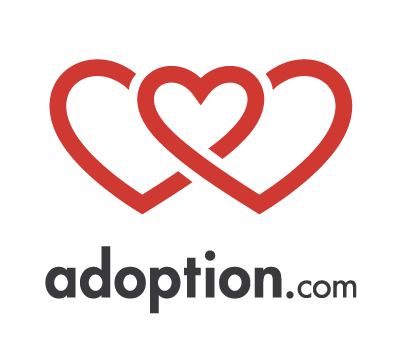Special Needs Adoption Guide
The world of adoption is constantly changing, and one of the current trends is the rise of children with special needs who are available for adoption. Most adoptions via intercountry adoption are of children with special needs, and many children in foster care who are available for adoption also have special needs. While on the surface, this can seem scary and overwhelming, often the reality is much more manageable. Join me as I walk you through special needs adoption and what you need to know.
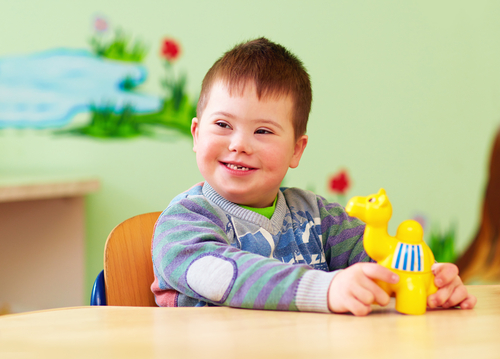
1. 1. Please Note
Although care has been taken to ensure the accuracy, completeness, and reliability of the information provided in this slideshow guide, you should not rely on it to make decisions. Instead, you should rely on licensed professionals in making decisions relative to adoption. The information in this guide is subject to change without notice. Adoption.com is not responsible for the consequences of relying on this information. In no event shall Adoption.com be liable for any direct, indirect, special, or incidental damage resulting from, arising out of, or in connection with the use of this information.
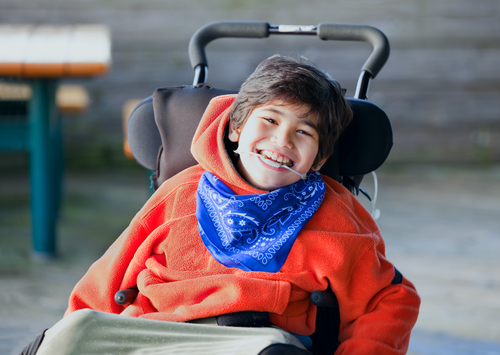
2. What is Special Needs Adoption?
Special needs adoption is when the child to be adopted has some sort of medical need or is older than an infant. The term ‘special needs’ can sound scary to a lot of people. When they read it, the phrase conjures up images of children unable to care for themselves or needing costly and scary medical procedures or some combination of the two. While some children available for adoption do have such needs, not all children who fall into this category fit that description. A special needs child could have something as simple as an extra digit on one hand to something more moderate such as cleft lip and palate. Often these children, aside from their specific medical issue are extremely healthy.
Another thing to keep in mind is the issue of trauma. There are many who believe that all adopted children should be considered special needs, since even medically healthy children and infants can be affected by past trauma. This can be the experience of parents who have adopted both special needs children and medically healthy children. I have heard many times from parents who’s children were deemed healthy at adoption say that the trauma their children endured affects them significantly more than any physical and medical issues of their other special needs children.

3. The Medical Conditions Checklist
For intercountry adoption, once you have chosen your agency to begin the adoption process, one of the very first things you will be asked to complete is the Medical Conditions Checklist (which you will sometimes see abbreviated MCC). This list tells your adoption agency what medical conditions in a child you would be open to. This can be a daunting process. Most lists divide the medical conditions by type. For example, medical conditions involving the face, heart, skin, blood, nervous system, skeletal system, etc. are listed out. I guarantee that unless you have a medical background, there will be conditions on this list you have never heard of, let alone considered as a possible component of your parenting experience.

4. The MCC Continued
How does one even begin to complete such a list? First, you need to do some research. The best way to research these conditions is to talk with parents whose children have these conditions. You can find out what life is like on a day-to-day basis, how much medical intervention is necessary, how much their family life had to alter to accommodate this child, and more. There are a couple good ways to find these parents.
The first is the blog No Hands But Ours. This is a terrific resource for parents investigating special needs adoption. Not only does it have links to resources for investigating the nature of the medical condition, but it also contains links to actual families whose children have these conditions. A diagnosis can be scary in the abstract, but when it comes in the context of a real person’s smiling face, it suddenly doesn’t seem quite so overwhelming.
Another valuable resource is the Facebook group, Special Needs Resources – China. This group is populated with parents of children with a wide range of special needs. These parents are always happy to answer specific questions about what life with a particular special need is like.
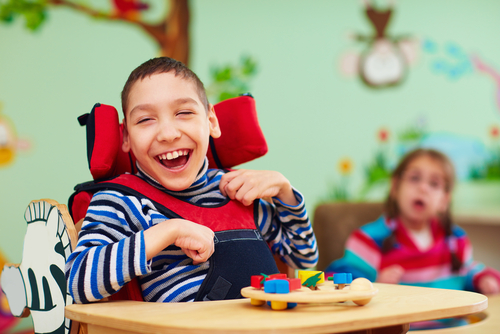
5. The MCC Continued
As you research, you will want to keep in mind several things. How much time do you have to go to therapies and medical appointments? Some special needs, such as cleft lip and palate often come with the need for extensive speech therapy and multiple surgeries. What is your insurance like and what does it cover? How much can you pay out of pocket for necessary medical needs? For instance, if you are interested in adopting a child who is hard of hearing, does your insurance cover hearing aids? How accessible is your home or how accessible can your home become? This could impact whether or not you could comfortably adopt a child who uses a wheelchair or has other mobility issues. I could go on and on, but as you go through the list, think about the reality of what life will look like and whether this life is possible for your family.
The last thing to remember is not to agree to a need about which you don’t feel comfortable. Guilt can make us do things for the wrong reasons, and it is never pleasant to feel as though you are turning away a child. But remember, what seems quite manageable to one family can seem impossibly hard to another. It is also true that as you grow as a parent and have more contact with the special needs world, what you feel comfortable with can also change.

6. Having a File Reviewed
The moment you have been waiting and waiting for has come. You have been given (or have chosen) a child you think is yours and you have the file in your hands. It can be both exciting and terrifying all at the same time. What does everything in the file mean? It might sound all right, but is it really? Or, it can sound positively dire and makes you want to hyperventilate. What do you do with all this information?
Most families choose to have a file reviewed by a doctor, and some agencies require this step. For some, this will be their own pediatrician or a specialist in the field of that child’s special need. For others, they will hire an international adoption doctor to review the file. There are benefits to each. Often, a family’s pediatrician will go over a file with that family free of charge and can give basic information about the conditions that appear in the file.
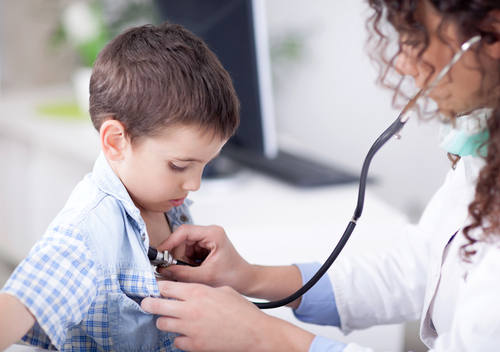
7. Having a File Reviewed Continued
The downside to this option is that most pediatricians do not have experience with international adoptees and children from orphanages. They may be overly concerned by some pieces of information or miss others. Specialists are certainly important for reviewing specific conditions. For instance, we had our pediatric neurologist review the file of one of our daughters before we went forward. In her case, the doctor was not able to guarantee that the dire prognosis this child had in her file was incorrect, but had enough questions about it to give us some comfort. (Our daughter did not turn out to have the dire diagnosis, but we were prepared to parent her even if she did.) Specialty international adoption clinics are well-versed in reading translated files and they understand the international adoptee population. They can often reassure parents as a regular doctor cannot and may spot things that might be missed. The down side to this option is that it can be expensive and add time to the process of accepting a child’s referral.
Many larger hospitals have international adoption clinics. Two well-respected ones are the University of Chicago Adoption Center and Children’s Hospital of Philadelphia International Adoption Health Program.
Another new option for having a file reviewed is the World Care Initiative. This is a group of medical professionals who have joined together to support orphans and other underserved people. They are offering free reviews of adoption files, and though a newly formed venture, could be well worth looking into.
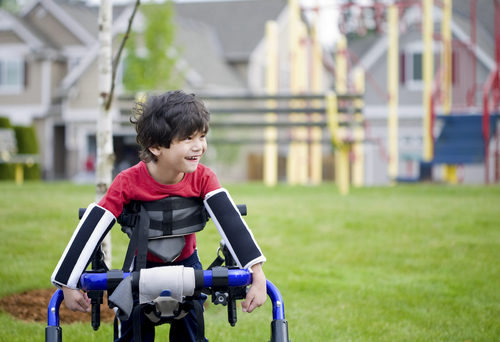
9. Having a File Reviewed Continued
One thing that the review process can offer is a description of the worst-case scenario for this child. There are no guarantees in international adoption, and the degree to which a child has a condition is no different. It is always helpful to have some idea of what the worst could look like. Then ask: Can I manage that? If the child is brought to you when you arrive in country and appears far more affected than you had believed, what are you going to do? It is important to be able to say that you would complete the adoption, but in order to do that, you need to be prepared for the worst. The file review process can help you discern if the worst is something you can indeed manage. If you do not think you can, then I would suggest not accepting that particular referral.

10. The Realities of File Accuracy
Now, here comes the tricky part. While some children’s files provide accurate and complete information, it is not uncommon to encounter files with glaring inaccuracies. Accuracy is not a given. Going into any international adoption, you have to assume that you do not know everything. You need to ask yourself if you are OK with this. It could be the file lists the wrong diagnosis for a child, either due to mistaken diagnosis, a translation error, or just sheer negligence. (We’ve had a child with a completely different diagnosis from the one listed in the file.) It could be that what is listed in the file is accurate, but another diagnosis is not listed and will come as a surprise to the new parents. (We’ve experienced this as well.) Or the file may overstate or understate the severity of the need. (Yep, done that, too.) Over and over, you need to really confront the question of whether you are committed to this particular child no matter what. And over and over again, you need to remind yourself that there are no guarantees. If you cannot accept that, think carefully about entering into the world of international adoption where real children’s lives are on the line.
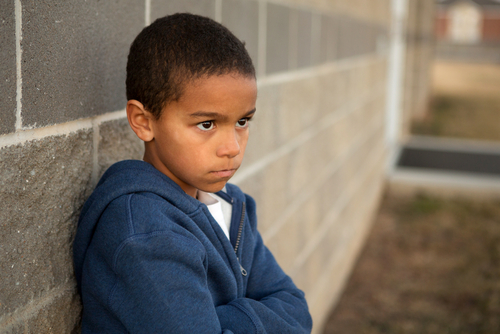
11. Trauma is a Special Need
Let’s talk about the special need that won’t appear in a child’s file, yet may have significant implications for the child and your family. Trauma is invisible, but it is a potent special need. Trauma can happen in utero if the mother was significantly stressed. Trauma can happen in infancy with change of caregivers. It can happen at any point along the way and can be caused by neglect, abuse, too many placements, or all of the above. Trauma is an adverse childhood experience which rewires the brain and makes it difficult for the child to function. It can masquerade as an alphabet soup of behaviors: ADD, ADHD, ODD, anxiety, and/or disassociation, among others. The child may have diminished executive function ability and a child affected the most by past trauma can feel like a ticking time bomb. It doesn’t matter the health or diagnosis or mental ability, any adopted child can be affected by trauma.

12. What Trauma Can Look Like
Every adoptive family needs to know what trauma looks like. Specific behaviors can include raging, hypervigilance, inappropriate emotional reactions, disassociation, running, sensory-seeking, sleeplessness, anxiety, and stimming. Every adoptive family needs resources in place to help their child heal from past hurts. Knowledge of parenting styles that are compatible with healing are also necessary. Living with a child with trauma can be difficult, but it is also possible to survive and thrive in the process. It is not something to be fearful of, but something to take seriously and be prepared for.
I would strongly urge potential adoptive parents to familiarize themselves with the work of Dr. Karyn Purvis, available through the Karyn Purvis Institute of Child Development. I have found the videos they produce to be extremely helpful and hopeful. Finding an Empowered to Connect conference to attend would also be terrific preparation for any adoption.
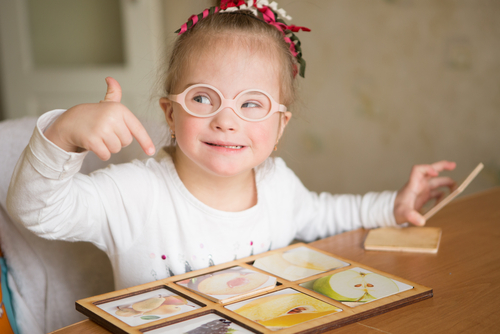
13. A Word About Syndromes
You may encounter the word “syndrome” in a child’s file, but what does this mean?! The idea of medical syndromes can seem even scarier to potential parents than a single diagnosis. There is really no need for this. A syndrome is merely a term which describes a condition when more than one medical diagnosis appears in conjunction. A syndrome simply gives a name to a group of symptoms or diagnoses that consistently intersect. A person with a syndrome may not manifest every single diagnosis. The degree of severity of each of the individual diagnoses will also vary from individual to individual. Probably the most well-known syndrome is Down syndrome, caused by having a duplicate of Chromosome 21. I think because this particular syndrome is often accompanied by intellectual delay, the word syndrome is linked in people’s minds with something that might be too difficult. Not all syndromes are accompanies by intellectual delay. And frankly, that is a need that is not nearly as frightening as it may initially seem. Two of my daughters live with intellectual delay, and it is pretty much a non-issue in our day-to-day lives.
The other thing to keep in mind as you are completing the MCC is that by opening your list up to the possibility of syndromes or multiple diagnosis, you will also broaden the number of children who would be a match for your family. This is not to say that parenting a child with a syndrome is for everyone, but do think about it first, as it is often not nearly as scary as it sounds.

14. Setting Up Your Support Systems
You have made it through the checklist and the file review and have accepted a child’s file. You’re going to have a new son or daughter! It’s exciting… and kind of scary. As you do other things, such as readying a room and buying clothes and figuring out travel plans, you also need to do something else: set up your support system. Who should that include? First you need to choose who is going to be your primary doctor: your pediatrician or a nearby international adoption clinic? Will you need specialists? Who are they going to be?
How is your social support system? Are your friends on board and excited about your adoption? Your place of worship? Tap into them. Most people want to help, but are often clueless about what help is really useful and needed. Ask a friend to arrange a meal delivery calendar (there are plenty of online options). Plan some playdates or fun outings for your current children, because adding a new sibling can be stressful and sometimes a break is helpful. Do you have any friends who have adopted? Have them on call for those panicked ‘What do I do? I think I’ve ruined my family’ moments that happen to everyone. If you don’t have someone in real life, join some adoption Facebook groups and make some virtual friends. There are plenty of experienced adoptive parents who are willing to be on call to talk you back off the edge when things are feeling bleak… even if it’s the middle of the night. Look for those people and connections now.

15. Setting Up Your Support Systems Continued
And even though you probably won’t need it, do some research into adoption therapists in your community. Know who they are and know if they take your insurance. Have their number on hand. Because if you do end up needing that number, I promise you, you won’t be in any state to do the research then. Please, it’s not fun, it’s not of immediate concern, but do it now anyway.
Lastly, do you have friends who share the same ethnicity and language of your new child? If you don’t, I would strongly suggest you figure out where these possible friends might be. Not only can these friends be useful as emergency interpreters, they also provide mirrors and role models for your new child so that they can interact with and see people who look like them. I also find talking to my Chinese and Vietnamese friends to be interesting and I always gain insight into my child’s first culture and what it is like to live in our culture as a person of color. These are things I cannot provide for my children and need the help of others to provide.

16. Facing Reality
I have yet to experience a moment as surreal as when you come face to face with your new child for the first time. In that moment, so many things pass through your mind. These thoughts can range from, “She looks just like her picture!” to “Oh my goodness, this child is a complete stranger to me. I thought I knew him, but I don’t–I don’t know what to do!” to “That cannot possibly be my child she is barely functioning. I think she is autistic. This isn’t what I signed up for. Can I run out of this building?”
We like the happy first meeting stories and videos; the ones where the new child falls into the new parent’s arms and everyone is happy, happy, happy. The hard reality is that very few first meetings go just like that. Nearly every first meeting involves some sort of panic on either the part of the child or the parent or both. It is a shock and how each of us deal with that shock can vary widely. Some children become manic, flapping and shrieking, or laughing uncontrollably. Some children wail as if their heart has been ripped out of their body and they will never be whole again. (Which is probably what it feels like to them, too.) Other children just shut down. They don’t look at anyone, they don’t speak, they don’t move. It is their way of coping. Even among the best prepared of children, this change in their circumstances can be difficult, but remember that some of these children were not prepared at all, and this is the first they are learning of their new life.

17. Your Reality Continued
All that is hard, and pretty normal. Then when you add in special needs, it just makes another layer of complication. It can be a puzzle to tease apart what you are seeing to assign it a cause. Is he behaving this way because of the shock, or is it because he is really at this level? It can also be a shock to actual see your child’s special need in person. Often, at first, it can seem so much greater than what you were anticipating. This happened to me when we met our daughter who has cerebral palsy. We had seen videos of her moving, so I was familiar with it, but there was something about see her walk in person that caused some momentary panic and a brief soul searching of, “Can I do this?!”
Sometimes the shock is causing the behavior and the child starts to adjust fairly soon. Sometimes the shock is causing the behavior and it takes more than a year for the child to really start to adjust and for the family to see the real child underneath. This happened with another of our daughters. The shock of all the change caused her to regress back to about an 18 month old, which is where she pretty much stayed for the first year. Only now, a year later are we starting to see glimpses of a different child.
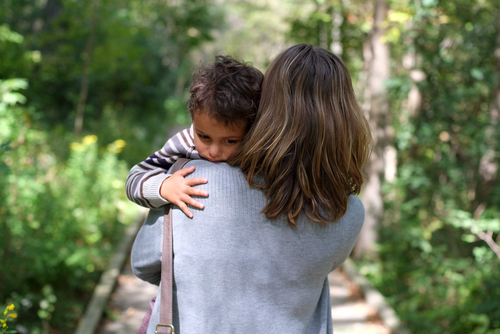
18. Your Reality Continued
And sometimes the child is really significantly more medically challenged than you believed. This is where that support system you set up before you traveled comes into play. You are jetlagged, in shock yourself from meeting a child who rarely matches the imaginary one we create in our head, and stressed from functioning in a different culture and language. Your critical thinking skills are not at their peak. This is the time to rely on those experienced parents who have stood in your shoes (often more than once) and can encourage you and give you hope. Because there is hope. The vast majority of children thrive in their new homes. Their parents adjust their expectations and fall in love with their child. Everyone grows and matures and wonders how they could have been so terrified. The terror does fade in the face of actual reality.

19. Upon Arriving Home
You’ve made it home. The jet lag is slowly going away. It’s time to get going on taking care of all the medical needs. If you didn’t make an appointment with either your pediatrician or international adoption clinic before you left, now is the time to do that. When you make the appointment, be sure to ask to have a translator present, unless you feel confident in communicating the doctor’s questions and directions to your child yourself. While our translators were a mixed bag, I always found them useful in those first few weeks.
The first appointment is going to be filled with tests and blood draws. At the minimum, there will be blood draws to check for basic information and rule out possible diseases. You will also be asked to collect a fecal sample (my personal least favorite part of the process), to rule out parasites. You and your doctor may also decide to draw blood to check the child’s titers (levels of antibodies present for various diseases) before deciding to repeat any vaccinations. If you are not using an international adoption clinic, you should bring the list of initial tests recommended by the American Academy of Pediatrics.

20. Insurance Issues
Insurance issues are always a tricky thing when parenting a child with special needs. First, you need to know that children covered by a parent’s group insurance policy are considered covered from their adoption day onward, just as a newborn would be. Not all HR departments know this, so you need to be informed in order to have your child covered from the appropriate starting date. And, just like a newborn, pre-existing conditions should be covered.
For private insurance, there are a variety of possibilities, from a plan accepting the new child as they would a newborn, to families needing to purchase a separate policy for their new child. You will need to investigate the specifics for your individual policy. This is not the same for medical sharing plans, so if you are going to be using one of these, you will need to check the fine print of your own particular plan.
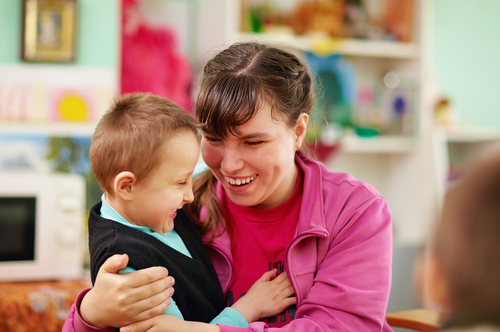
21. Insurance Issues Continued
We all know, though, that insurance doesn’t cover everything. Special needs parents quickly learn to keep calling both doctor’s offices and insurance offices as they sort through who pays for what. Often, if the doctor’s office recodes a medical procedure, the insurance will then pay for it. We also all know that even the squeakiest wheel doesn’t get everything paid for all the time. In some states, supplemental insurance is available for children with specific medical conditions. In some places, these are available for all children, and in others, it’s based on family income. With this type of supplemental insurance, that state picks up what the primary insurance doesn’t with regard to any medical treatment relating to that specific diagnosis. It is worth checking into.
There are also Shriners Hospitals. These are hospitals around the country that specialize in certain special needs (orthopedics, cleft, burn care, and spinal injury) and treat children regardless of a family’s ability to pay. Many children have received excellent medical care at these facilities. You will first need to apply to the Shriners Hospital programs.
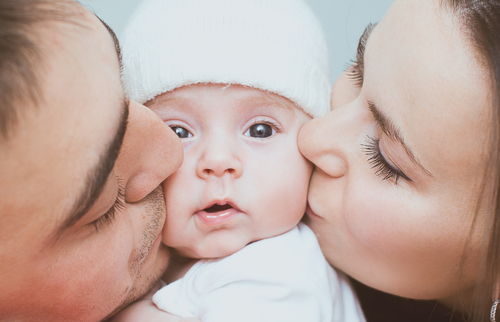
22. Navigating the Medical System
Some special needs are not medically intensive. Either it’s a brief visit to a doctor on a set schedule or one operation and life continues on. But for others, a child’s special needs may require multiple doctors and tests and procedures. It becomes an art form to keep it all straight. While many of my special needs parenting friends swear by their smart phones to keep track of appointments and doctors, I am not that technologically savvy. My preferred way is to use file folders and a giant wall calendar. Each child has a file folder for each specialist as well as a file folder for supplemental insurance. These are kept together and it makes it simple to find the correct piece of paper based on which doctor we’re talking about. Other parents use binders, which do have the benefit of being easily carried. Whichever organizational system you decide to use, start it right away. The medical reports, referrals, directions, names, and numbers can easily overwhelm if you aren’t ready to sort them out from day one.
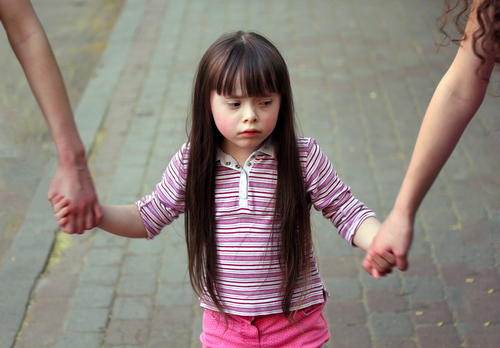
23. Becoming Your Child’s Advocate
When you adopt a child with special needs, you become something more than just a parent. You also become your child’s advocate. You are the one who will be keeping the doctors straight. You are the one who will be double-checking that they are not working at cross purposes. You will be the one to seek out second opinions and educate yourself on your child’s special needs and best practices. As such, you have the right to be taken seriously by the doctor and medical professionals you work with. Remember, you are hiring them and you, as the parent, are a part of the team, a very valuable and knowledgeable team member, especially regarding your child. No one knows that child like you. No one will fight for your child like you.
You will also be taking your child out into the wider world. This isn’t such an issue if your child’s need is not immediately visible, but for a special need that draws attention or requires medical equipment, navigating questions and comments and stares becomes a specialty all its own. Be prepared to help your child navigate the wider world, as well as to educate the wider world on how to be more accepting of your child and others like her.
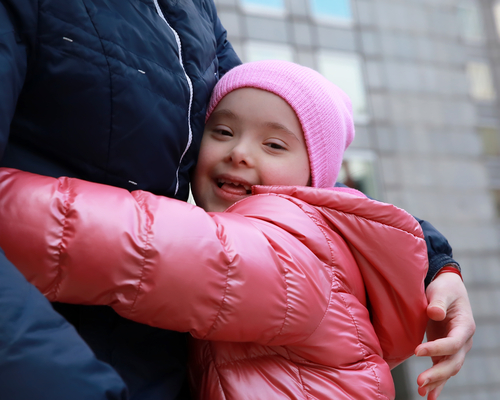
24. Our Children
Our children with special needs are really just like any other child. They laugh, cry, have fun, love to play, get into trouble, and are unique individuals. They are first and foremost children. Children who might need to visit a few more doctors. Children who might need to take a little more time to learn something. Children who may not run or move as easily as other children. But the love a parent has for a child with special needs is no different than the love a parent has for a typically healthy child. A child with special needs is no more difficult to love than any other child. Special needs are not scary once you become familiar with them. Remember these are children, living, breathing, loving children, first. The diagnoses come along a distant second.



